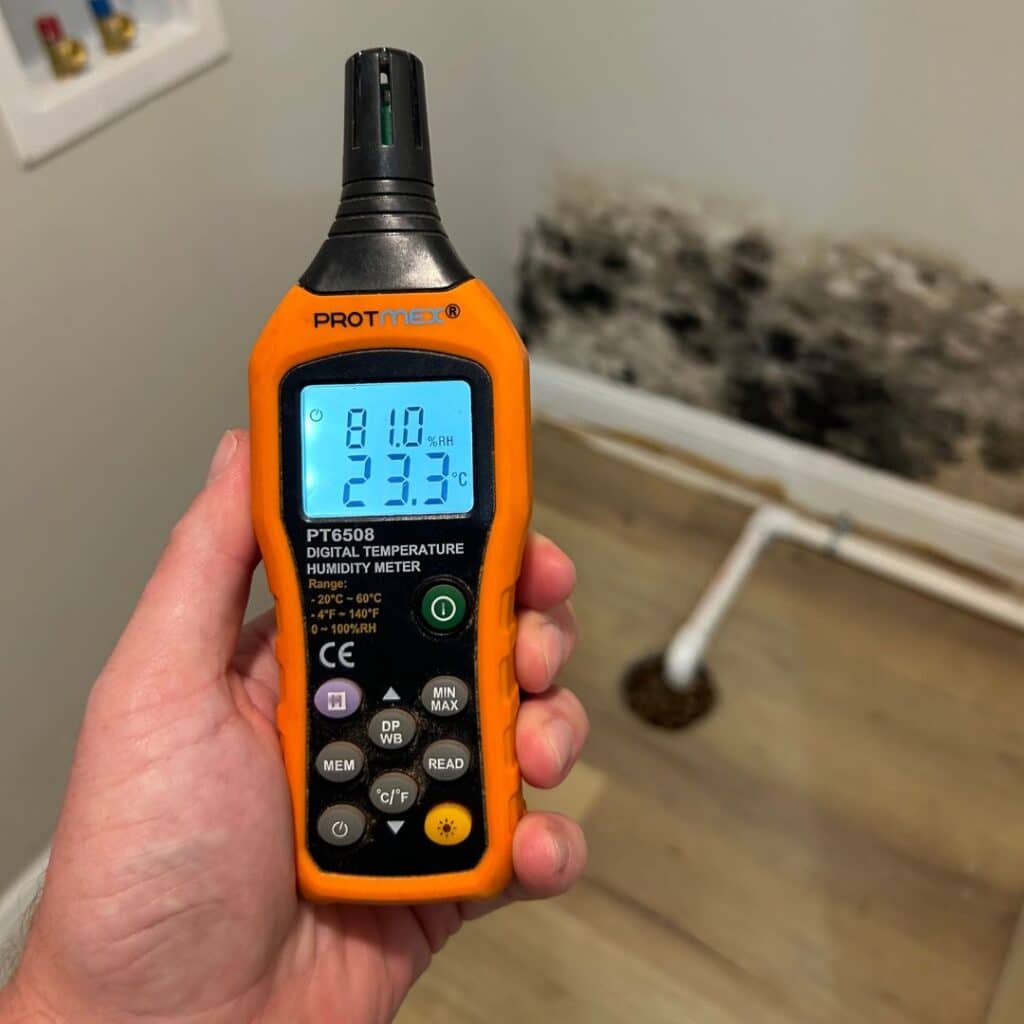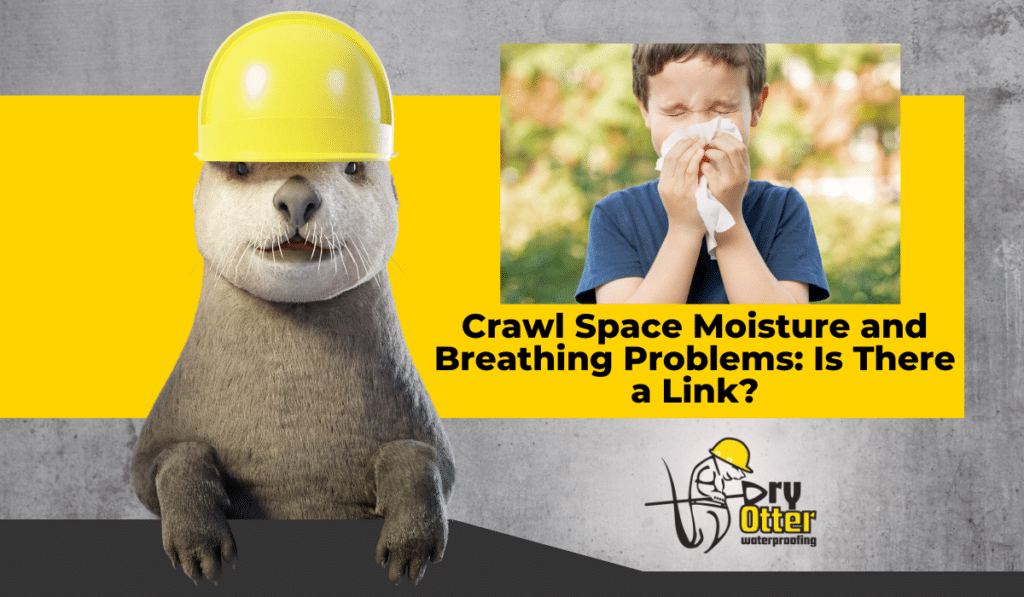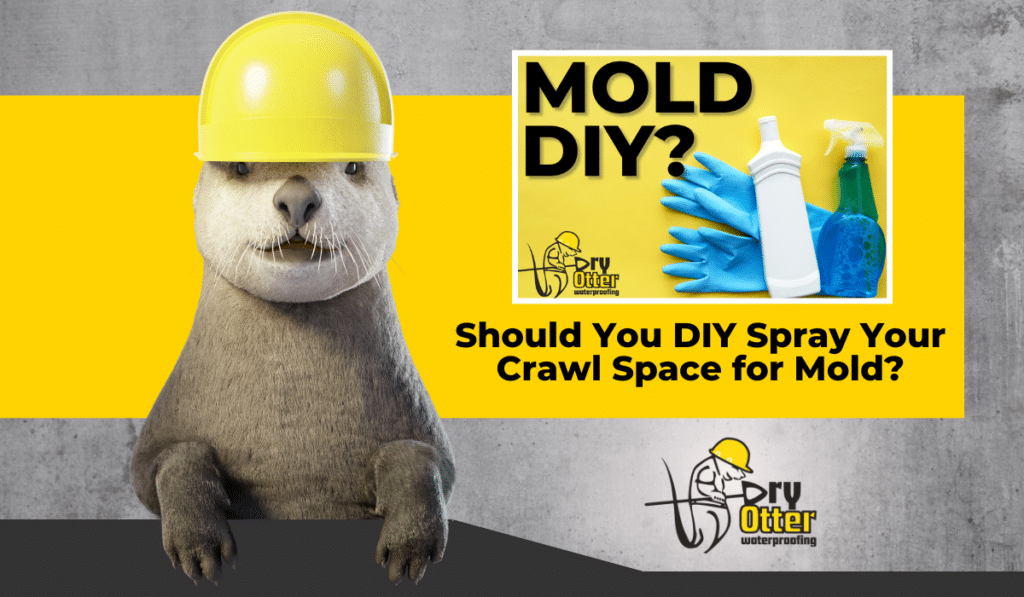Mold can infiltrate your home before you realize you have a problem. Early identification of
a mold issue, and the type is critical to your health.
Mold can cause serious health issues, such as severe allergies, respiratory problems, and other chronic conditions, and if you already suffer from these conditions, early detection is critical.
Mold types in basement areas:
The most common types of mold found in basements are often associated with different colors, such as black, green, white, gray, and brown.
Common Basement Mold Types
Mold types in basement areas are categorized by color and name.
Black mold is usually Stachybotrys chartarum, but it’s important to note that other types of mold can also be black.
Green mold is commonly Aspergillus and Penicillium species.
White mold is usually Cladosporium and Alternaria.
Gray mold can also indicate Cladosporium and Alternaria.
Brown mold is usually Stachybotrys chartarum but can also indicate other types.
Basements are damp, often poorly ventilated spaces that are perfect breeding grounds for mold. Excess moisture, leaking pipes, and lack of airflow contribute to mold growth.
What is Black Mold?
Black mold in basement: Black mold in basement areas, also known as Stachybotrys chartarum, is very concerning because of the potential health risks, such as severe respiratory issues and neurological symptoms.
It can be black or greenish black and grow in different forms, such as flat, dark patches, slime, or fuzzy growth.
Black mold thrives in basements because they usually have high humidity from trapped moisture, poor ventilation and airflow, water leaks, and temperature swings.
Of all the different basement mold types, black mold should be removed by a professional for these reasons:
- Health risks: Black mold can produce mycotoxins, which can cause serious health problems, such as respiratory issues, allergies, and immune system disorders. DIY removal isn’t a risk you should take.
- Proper identification: Proper identification of your mold species is vital to applying an effective treatment. A professional has the expertise to perform proper identification, which can be tricky.
- Safety: Removing mold involves handling hazardous materials. A professional has the equipment and training to do it safely and effectively.
- Removal: Black mold can hide and spread. Professional remediation experts are necessary because they have the tools and knowledge to do a thorough job.

What is White Mold?
White mold in basement areas often appears as a powdery or fluffy white fungus. It can grow on surfaces like walls, ceilings, carpets, and wood.
Don’t let white mold deceive you. Although it may look less harmless than black mold, it can still cause serious health risks and structural damage.
White mold in basement areas vs. black mold: The key difference is that white mold is white or off-white, usually powdery or fluffy.
While both types of mold cause health problems, black mold is usually responsible for more severe health risks because of the mycotoxins black mold produces.
White mold can live in various conditions but is often found in your basement’s cooler, humid environments. You will see growth on concrete walls, wood beams, and insulation.
Black mold, on the contrary, prefers warmer, more humid conditions.
Other Mold Types Found in Basements
Green, yellow, gray and brown molds can also grow under the right conditions.
Green mold often appears fuzzy.
Yellow mold can appear powdery or slimy.
Gray mold is usually a grayish or brownish-gray growth.
Brown mold appears as brown patches or stains.
All of the different types of mold mentioned above can cause allergies, asthma, and other respiratory issues. They all compromise indoor air quality because they release mold spores into the air.
Any one of these molds can also damage your home’s structural integrity because they promote the breakdown of your building materials.

How to Prevent and Remove Basement Mold
Prevention is the key to stopping mold growth. Address the underlying causes of mold growth, like water leaks, ventilation issues, and moisture buildup, using dehumidifiers and early intervention before you have a serious problem.

While we don’t recommend DIY removal of mold if you have a small patch, you would like to get rid of, these are the general guidelines:
- Equipment needed: gloves, mask, protective eyewear, disposable clothing, bleach, spray bottle, microfiber cloth, and a dehumidifier.
- Close off the area to prevent the spread of the spores.
- Open windows and doors for air circulation.
- Wear all protective gear.
- Mix a bleach/water solution, spray the area, and let it sit for 10-15 minutes. Scrub the mold area with a cloth and wipe away the mold solution with a clean, damp cloth.
A professional remediation company like Dry Otter Waterproofing is the best solution to prevent black mold or large infestations. They have the equipment and expertise to get the job done right!






